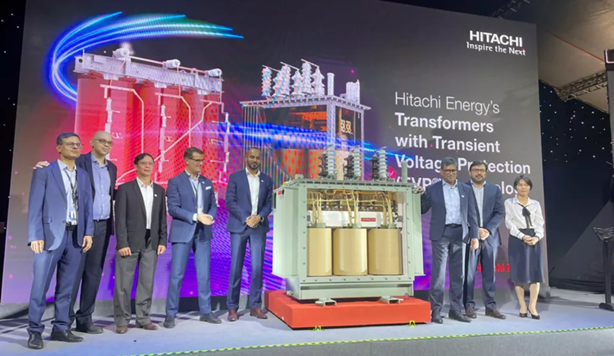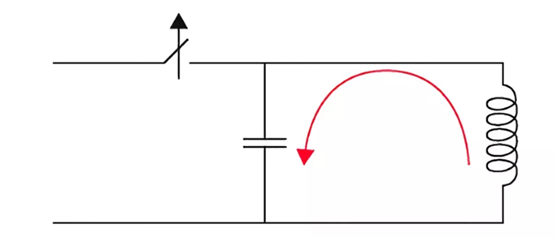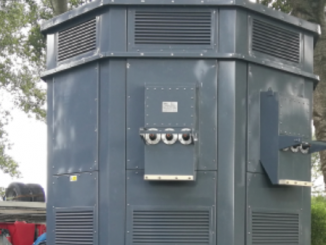
In two recent developments, power equipment manufacturer Hitachi Energy has acquired COET, an Italian specialist in high-voltage switching products, and has also extended its transient voltage protection technology into liquid-filled distribution transformers. It combats the sudden release of magnetic energy that can occur when a voltage circuit breaker is disconnected, an event which can be catastrophic for transformers along with critical network equipment and downstream magnetic systems.
Hitachi Energy, based in Zurich, Switzerland, and COET, located in the greater Milan area of Italy, have a long-standing collaboration focused on Hitachi Energy’s portfolio of high-power charging infrastructure solutions. COET also manufactures DC traction products and components for rail and AC and DC equipment for high-power industrial applications. The acquisition strengthens Hitachi Energy’s position in high-power electric vehicle charging infrastructure, power electronics and the grid edge.
“We are delighted to welcome our partner of many years into the Hitachi Energy family,” said Niklas Persson, managing director of Hitachi Energy’s Grid Integration business. “The acquisition will enhance our position as a global leader in power grid technologies and energy infrastructure for eMobility, transport, and industry, while COET and its customers will benefit greatly from our global footprint and power expertise.” COET will operate as a standalone business with its existing management and retain all of its operations. The company has approximately 80 employees.
Hitachi Energy’s Grid-eMotion offering of high-power charging infrastructure for electric bus and truck fleets is growing rapidly worldwide. Its grid-to-plug and ultrafast-charging solutions have been deployed in sustainable transport projects for bus and truck fleets in Australia, Canada, Dubai, France, Germany, Italy, Sweden, Switzerland, the UK and others.

Hitachi Energy recently highlighted its transient voltage protection (TVP) technology in Vietnam as it inaugurated a new transformer factory in Bac Ninh, Vietnam where the company’s transformers with TVP integrated into them will be produced. Already proven in the company’s dry-type transformers, the technology is now expanding to its liquid-filled transformers.
Transient voltage is a silent threat across different segments like data centers, solar and wind renewable power generation, industrial operations and rail infrastructure that use medium voltage fast-acting circuit breakers like vacuum circuit breakers (VCBs). When processes require electrical network switching or in case of nuisance tripping, the transformers can be at risk of premature failure due to switching transients, resulting in costly outage and equipment damage.
While they have excellent arc-quenching capabilities that brings increased safety and efficiency to electrical systems, in certain system configurations and procedural operations, VCB switching can produce fast transient over voltages inside of transformer windings, some leading to failures. The TVP technology provides complete protection to transformers and downstream magnetic equipment at every single switching instance, says the company, no matter the network configuration nor how often switching operations are performed.

Some 2,500 units of dry-type transformers with TVP have been installed in diverse applications and geographical regions over the past seven years with no known field failures, leading to the expansion to liquid-filled units. Transformers equipped with TVP have varistors strategically integrated into the transformer windings to enhance the coil technology. Their location protects coils from both reignitions and resonance amplification during switching events.
As explained by Suhel Patel with Hitachi Energy, VCBs are like highly efficient switches within electrical systems, providing an essential layer of safety and reliability. They play a pivotal role in maintaining the integrity of electrical networks. However, in specific scenarios, during their switching operations, or when similar devices like SF6 breakers perform similar actions, they can introduce significant and unpredictable transient voltage surges. These surges have the potential to accelerate the aging and deterioration of insulation materials and elevate the risk of equipment failures, notably affecting critical components like transformers.
The underlying mechanism involves the release of magnetic energy during a VCB’s disconnection phase. The magnetic energy subsequently gives rise to transient voltage fluctuations, resembling rapid and potent electrical oscillations. These fluctuations possess the capacity to inflict damage on electrical equipment and introduce the possibility of recurring transient voltage events and associated electrical issues.

Transient voltage arises from the intricate dynamics at play when VCBs are engaged or disengaged. When a VCB is activated to interrupt the electrical current flow, it accomplishes this task with remarkable precision. However, this action involves opening or closing the electrical circuit in a controlled manner. As the VCB progresses in its switching operation, the electrical current is intentionally interrupted. When this occurs, the energy within the circuit seeks a path for dissipation.
As current is chopped during breaker operation, magnetic energy will be trapped in the inductances on the load side of the circuit breaker. This will cause a current circulating between the inductance and the capacitance present on the load side of the circuit breaker, resulting in transient overvoltage. Current chopping could cause both multiple reignitions and virtual current chopping when using vacuum circuit breakers.
The magnetic energy thus trapped in the inductance of the system begins to discharge. As this magnetic energy discharges, it causes a current circulating between the inductance and the capacitance present on the load side of the circuit breaker, resulting in transient overvoltage.
The consequences vary, ranging from gradual reduction of insulation life which eventually leads to an arc fault failure of transformer and other equipment to immediate failure. Greater detail is available in a blog by Patel on the company’s website. For more info, see www.hitachienergy.com.



